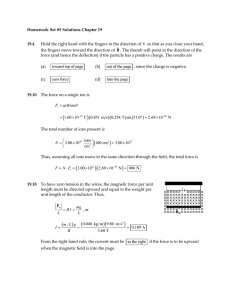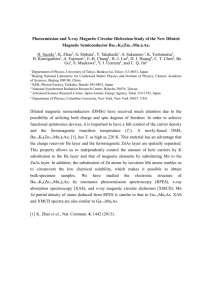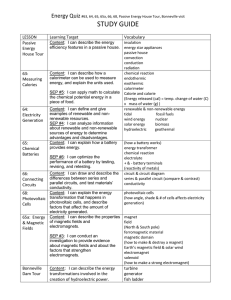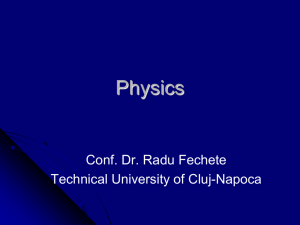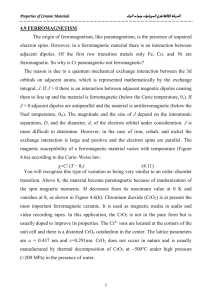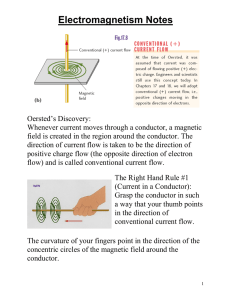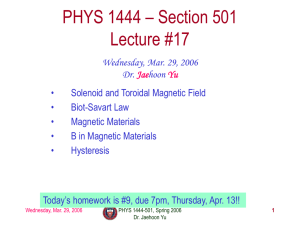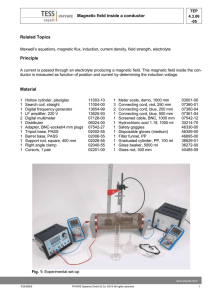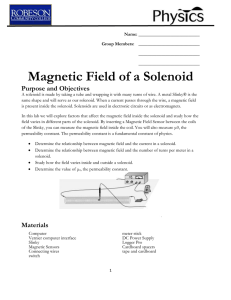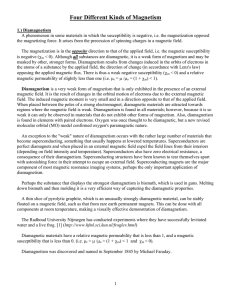Chapter 20 Notes 20d
advertisement
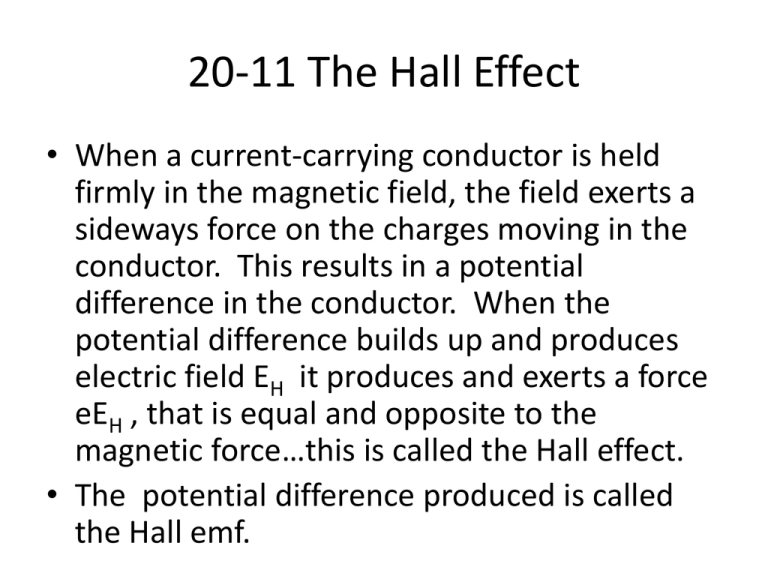
20-11 The Hall Effect • When a current-carrying conductor is held firmly in the magnetic field, the field exerts a sideways force on the charges moving in the conductor. This results in a potential difference in the conductor. When the potential difference builds up and produces electric field EH it produces and exerts a force eEH , that is equal and opposite to the magnetic force…this is called the Hall effect. • The potential difference produced is called the Hall emf. 20-12 Mass Spectrometer • Mass spectrometers were designed to measure the mass of atoms. Ions are produced by heating substances to high temperatures… • If the electric force qE up on + ions is just balanced by magnetic force qvB (down on positive ions) is balanced, then the ion will pass through a selector slit. ( qE=qvB or v=E/B • Isotopes were found in this way, because only ions or atoms of the same mass pass through the slit. (see p607 and p608) • See Example 20-14 p608 20-13 Ferromagnetism; Domains *Some materials can be made into ‘permanent’ magnets. •These materials are said to be ferromagnetic. •Small, often microscopic regions, called domains, (at most 1mm) are aligned in ferromagnetic substances. They are random in nonferromagnetic substances. •Above a certain temperature, called the Curie Temperature, (1043 K for iron) no magnetism can be produced at all 20-14 Electromagnets and Solenoids *When a coil is wrapped around iron, or other ferromagnetic substance, an electromagnet can be produced. *Electromagnets have many uses. (see p 611) 20-15 Magnetic Fields in Magnetic Materials ; Hysteresis *The magnetic field inside a solenoid can be found using B0 = u0 nI •When a ferromagnetic material is inside a solenoid we use the formula: B = u nI where u is the magnetic permeability of the material in the center of the solenoid or electromagnet. *Measurements of magnetic materials are often made using a torus, which is an iron ring solenoid. * Hysteresis is a curve resulting from these measurements, using a torus, where the curves do not retrace their data points of the previous curve. Homework ch20TXTD • P618-619 prob. 47,50-51,56




